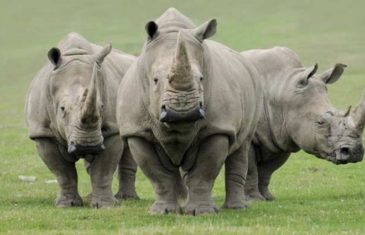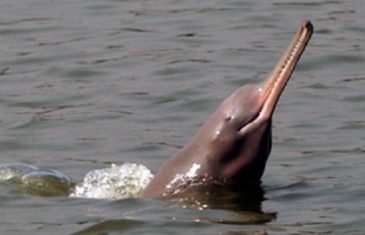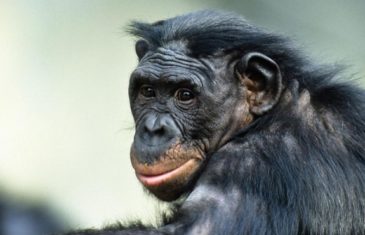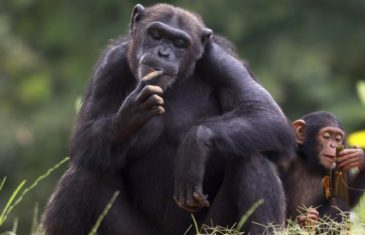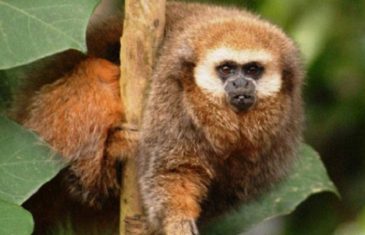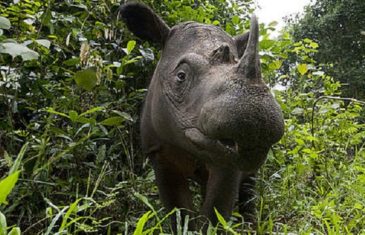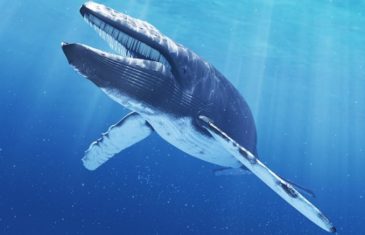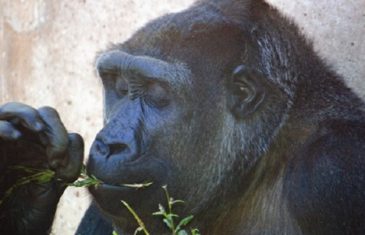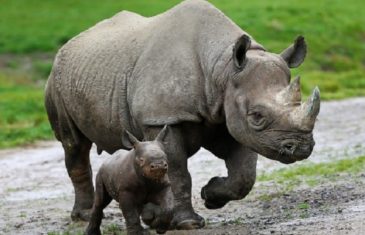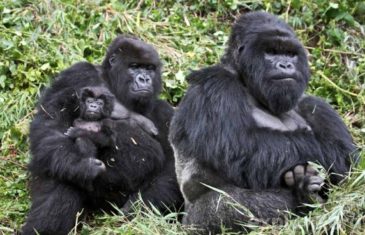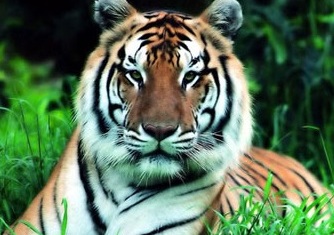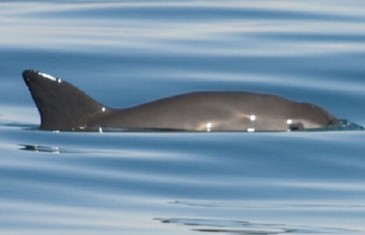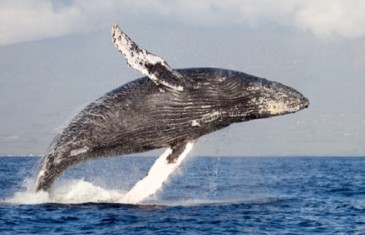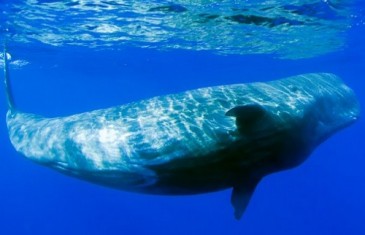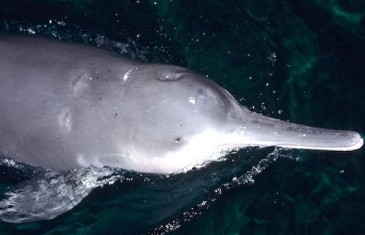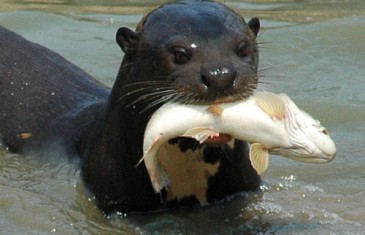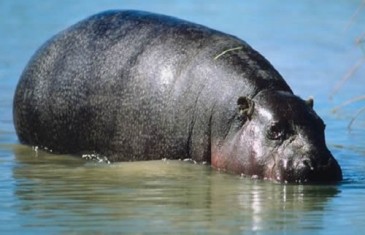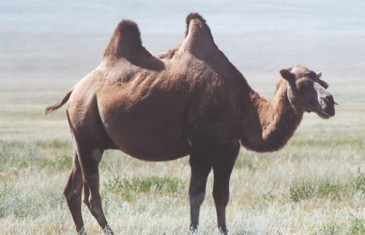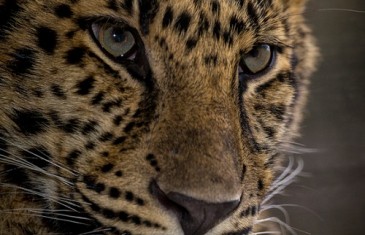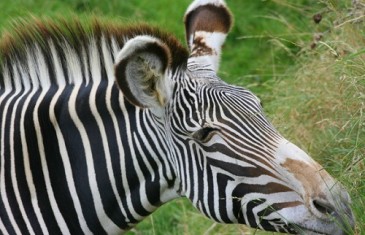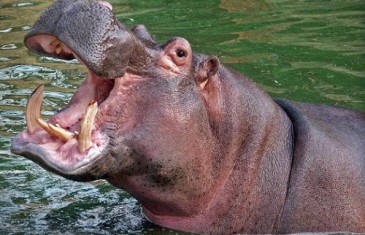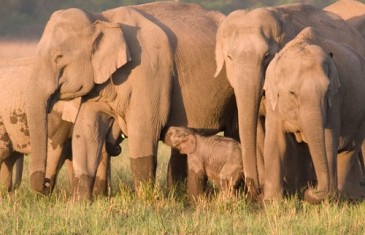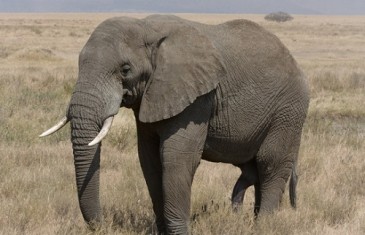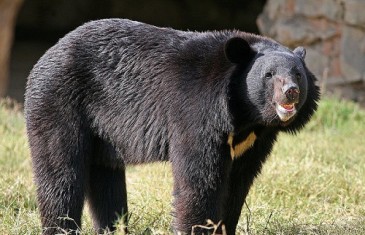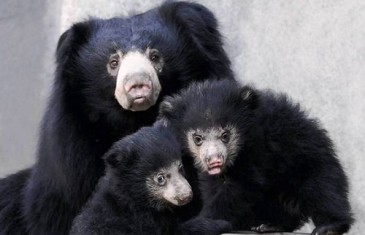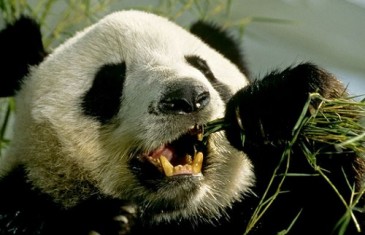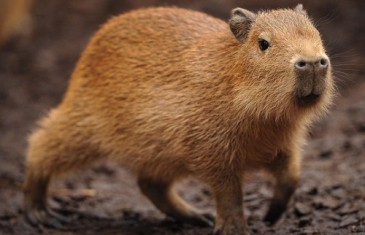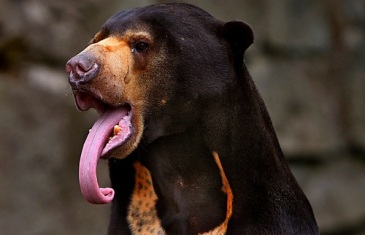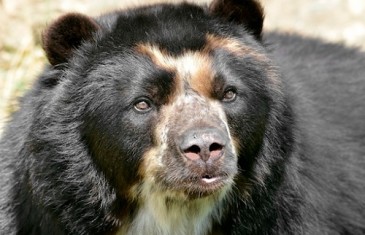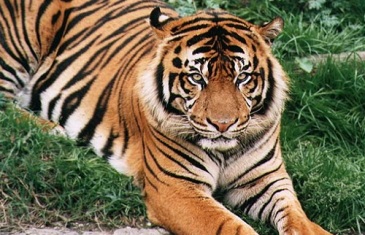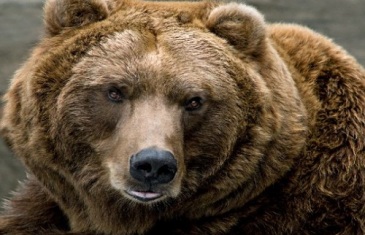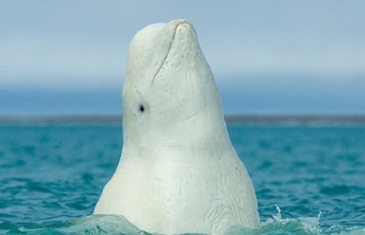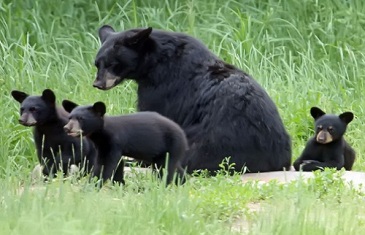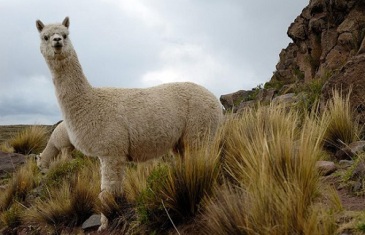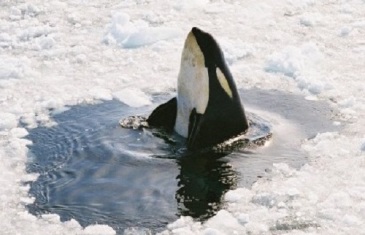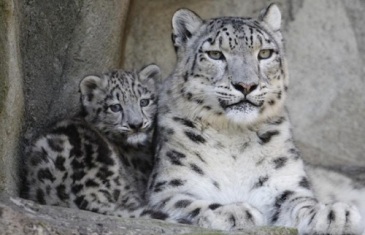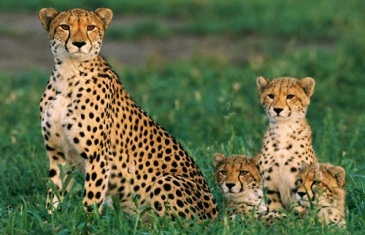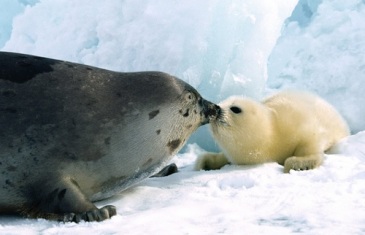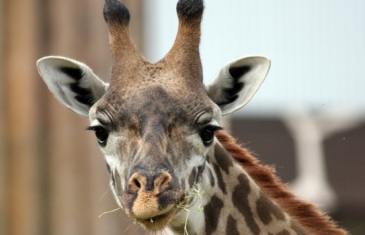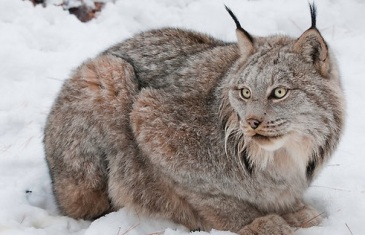Did you know? There are only 3 Northern white rhinos left in the world. They live in a private sanctuary in Kenya. One of them is a male and two are female. Neither female is capable of natural reproduction. There are two subspecies of the White Rhino; the Northern white rhino which is and extinct […]
Read moreName Scientific Name: Platinista gangetica. Common Name: South Asian River Dolphin, Blind River Dolphin, Ganges Susu (Ganges River Dolphin subspecies), Bhulan (Indus River Dolphin subspecies). Conservation Status The South Asian River Dolphin is listed as Endangered by the Internation Union for the Conservation of Nature. It is listed under Appendix I of the Convention on International […]
Read moreInteresting Facts The last common ancestor of today’s apes and humans lived about 18 million years ago. Humans and Pan (chimps and bonobos) diverged 5 to 8 million years ago. One explanation for the genetic separation between bonobos and is the formation of the Congo River about 1.5 million years ago which divided the population preventing […]
Read moreInteresting Facts Genetic studies show that chimpanzees and humans share a common ancestor and 98% of genes. Because we are so similar chimpanzees get many infectious diseases that humans get. Chimps belong to the group of greater apes along with gorillas, bonobos and . They are stronger than humans because of the way neurons activate […]
Read moreo o Interesting Facts The Andean Titi Monkey belongs to the genus Callicebus. There are 30 species of titis that belong to this genus. The Andean Titi is locally known as “mono tocon” or in the native Awajun language as the “sugkamat”. Their tails are longer than their bodies. Name Scientific Name: Callicebus oenanthe Common Name: San Martin […]
Read moreInteresting Facts A calf born in the Cincinnati Zoo in Ohio was the first Sumatran Rhinoceros born in captivity in over 100 years. There are fewer than 250 Sumatran Rhinoceros in the wild, they are so endangered that they are one of the rarest large mammals in the world. There are five types of rhinoceros: […]
Read moreInteresting Facts The two species of orangutan, Sumatran Orangutan (pongo abelii) and Borneo Orangutan (pongo pygmaeus), genetically diverged about 1.5 million years ago. Orangutans have 32 teeth, the same amount as humans. It is believed that humans and apes had a common ancestor 15 million years ago. They share 97% of their DNA with humans. Orangutans are […]
Read moreBlue Whale are the largest animals to have ever existed on earth, due to its size there are no Blue Whales in captivity. These animals are also the loudest animals on earth. During the 20th century the species was almost exterminated due to commercial whaling. Blue Whales can be found in all major oceans of […]
Read moreInteresting Facts about Gorillas Gorillas develop twice as fast as humans. Gorillas share 95% of our human genome. A group of gorillas is called troop. The Western Lowland Gorilla is the subspecies that is often found in zoos. American zoologist George B. Schaller was the first scientist to study and observe gorillas. He published […]
Read moreKingdom Phylum Class Order Family Genus Species Animalia Chordata Mammalia Perissodactyla Rhinocerotidae Diceros D. bicornis o o Conservation The IUCN Red List of Threatened Species lists the Black Rhino as Critically Endangered. The species is listed on CITES Appendix I. International trade in Black Rhinos and their products is prohibited. Fun Facts about Rhinos […]
Read moreInteresting Facts about Gorillas Gorillas are our closest relatives. They share 98% of our genome. American zoologist George B. Schaller was the first scientist to study and observed gorillas. He published his findings in his book “The Mountain Gorilla: Ecology and Behavior” Taxonomy Kingdom: Animalia Phylum: Chordata Class: Mammalia Order Primates Suborder: Haplorhini Family: […]
Read morePopulation and Conservation Status The South China Tiger is the most critically endangered species of tiger in the world. There are about two dozen in world in reserves in China and South Africa. According to the International Union for the Conservation of Nature this subspecies may be functionally extinct as it has not been observed […]
Read moreo o Name Scientific name: Phocoena sinus Common name: Vaquita, Gulf Porpoise, Gulf of California Porpoise. Vaquita is for “little cow” in Spanish. Conservation Status The vaquita is the most endangered cetacean after the was declared functionally extinct in 2006. Phocoena sinus is listed as Critically Endangered by the IUCN Red List of Threatened Species. […]
Read moreo o Name Scientific name: Megaptera novaenanglia. Megaptera is derived from the Greek mega for “large” and pteron for “wing”. Novaeangliae for New England where the humpback was first described scientifically. Common name: Humpback whale, hump whale, hunchbacked whale. Conservation Status The humpback whale is listed as Least Concern by the IUCN. Its status was […]
Read moreName Common name: Sperm Whale, Spermacet Whale, Cachelot, Pot Whale. “Spermaceti”, the organ in the head of the whale which contains an oily liquid once believed to be sperm. Scientific name: Physeter macrocephalus. Physeter is derived from the Greek word for “blowpipe or blowhole” Macrocephalus is derived from Greek meaning “big head”. Conservation Status […]
Read moreo o Name Common name: Baiji, Yangtze River Dolphin, Chinese river dolphin, white-fin dolphin, white-flag dolphin. Scientific name: Lipotes vexillifer. Population The total population in the early 1990s was believed to be less than 100 individuals in the wild. The last documented sighting was in 2002. In 2006 an acoustic and visual survey failed […]
Read moreTaxonomy Kingdom: Animalia Phyllum: Chordata Class: Mammalia Order: Sirenia Family: Trichechidae Genus: Trichechus Species: Trichechus inunguis o o Name Common name: Amazonian manatee, South American manatee, Amazon sea cow. Scientific name: Trichechus inunguis. Physical Features The Amazonian manatee is the smallest of the three living species of the Trichechus genus, the West Indian manatee […]
Read moreName Common name: Amazon River dolphin, pink dolphin, boto, bufeo. The name originates from the Greek delphus meaning “womb”. It can be interpreted as “fish” with a “womb”. Scientific name: Inia geoffrensis. Inia derives from the Guarayos tribe in Bolivia. Taxonomy Kingdom: Animalia Phylum: Chordata Class: Mammalia Order: Cetacea Family: Iniidae Genus: Inia Species: Inia geoffrensis […]
Read moreName Common name: Giant otter, giant Brazilian otter, giant river otter. Scientific name: Pteronura brasiliensis Population The IUCN Otter Specialist Group estimates a total wild population of 1,000 to 5,000 individuals and an estimated decrease in population of 50% over the next 20 years. Taxonomy Kingdom: Animalia Phylum: Chordata Class: Mammalia Order: Carnivora Family: Musteliadae Subfamily: […]
Read moreTaxonomy Kingdom: Animal Phylum: Chordata Class: Mammalia Order: Artiodactyla Family: Hippopotamidae Genus: Choeropsis Species: Choeropsis liberiensis o o 0 Population The IUCN estimates a population of less than 3,000 individuals with a projected decline of 20% over the next 20 years. Name Scientific name: Hexaprotodon liberiensis or Choeropsis liberiensis. Choeropsis from the Greek “having the […]
Read morePopulation According to the IUCN as of 2004 there were 600 wild Bactrian camels in China and 350 in Mongolia. Population trend is decreasing. Name Scientific name: Camelus ferus. Camelus from the Latin camelus and the Greek Kamelos for “camel”. Ferus from the Greek word ferus meaning “savage” or “wild”. Common name: Mongolian wild camel, wild […]
Read moreTaxonomy Kingdom Phylum Class Order Family Genus Species Animalia Chordata Mammalia Carnivora Felidae Panthera Panthera pardus o o Name Scientific name: Panthera pardus. Panthera is derived from the Latin word panthera or the Greek word panther meaning “panther, leopard”. Pardus is derived from the Latin pardus or from the Greek pardos meaning “male panther”. Common […]
Read moreName Scientific name: Equus grevyi. The word equus is from the Latin word for “horse”. This species was named Grevyi after Jules Grèvy, president of the Third Republic of France in the late 18th century who was given one of these zebras as a gift in 1882. Common name: Grevy’s zebra, Imperial zebra. The word […]
Read moreTaxonomy Kingdom: Animalia Phylum: Chordata Class: Mammalia Order: Carnivora Family: Mustelidae Genus: Enhyndra Species: Enhyndra lutris o o Name Common name: Sea otter. Scientific name: Enhyndra lutris. Enhiyndra comes from the Ancient Greek word for “water” and lutris from the Latin word for “otter”. Habitat Sea otters live in coastal areas, primarily in the ocean but they […]
Read moreTaxonomy Kingdom: Animalia Phylum: Chordata Class: Mammalia Order: Artiodactyla Family: Hippopotamidae Genus: Hippopotamus Species: Hippopotamus amphibious 0 0 Name Common name: Common hippopotamus, river hippopotamus, Nile Hippopotamus, large hippo. Scientific name: Hippopotamus amphibious. Hippos from the Greek word “horse”, potamos from the Greek “river or rushing water”. Physical Features The common or river hippopotamus is […]
Read moreo o Conservation Status The Asian elephant is listed under Appendix I of CITES. The Asian elephant is listed as “endangered’ in the IUCN Red List of Threatened Species. Its population has declined by more than 50% over the last 45 years. The subspecies Sumatran elephant (Elephas maximus sumatranus) is listed as “critically endangered”. It […]
Read moreName Common name: African Scientific name: Loxodonta africana Physical Features African elephants are the largest and heaviest on earth. They have larger ears than the and they are shaped like the continent of Africa. Each ear can measure 4 ft or 1.2 m across. Their large ears are used to control their body temperature. They […]
Read moreTaxonomy Kingdom Phylum Class Order Family Genera Animalia Chordata Mammal Proboscidea Elephantidae Loxodonta Elephas 0 0 Distribution and Habitat There are two subspecies of elephants: and Asian elephant (Eliphas maximus). are distributed throughout sub-Saharan Africa and found in 37 countries. Asian elephants are found throughout South Asia and Southeast Asia. Elephants need a vast habitat […]
Read moreTaxonomy Kingdom Phylum Class Order Family Genus Species Animalia Chordata Mammalia Carnivora Ursidae Ursus Ursus thibetanus 0 0 Name Common Name: Asiatic black bear, Asian black bear, Himalayan Black bear, Tibetan black bear, moon bear. Scientific Name: Ursus thibetanus Distribution and Habitat The Asiatic black bear has a wide distribution. Its range covers southeastern Iran, […]
Read moreTaxonomy Kingdom Phylum Class Order Family Genus Species Animalia Chordata Mammalia Carnivora Ursidae Melursus Melursus ursinus 0 0 Name Common name: Sloth bear. Scientific name: Melursus ursinus Sloth bears are not related to sloths. George Shaw, a European zoologist, believed they were related. He named this species for features they share with tree sloths such […]
Read moreTaxonomy Kingdom: Animalia Phylum: Chordata Class: Mammalia Order: Carnivora Family: Ursidae Genus: Ailuropoda Species: o o Name Common name: Giant panda, panda bear, panda. Scientific Name: Ailuropoda melanoleuca Distribution and Habitat Historically the giant panda occupied most of southern and eastern China. Today its distribution has been reduced by 92% from its original range. Currently […]
Read moreTaxonomy Kingdon: Animalia Phylum: Chordata Class: Mammalia Order: Rodentia Family: Caviidae Genus: Hydrochoerus Species: Hydrochoerus hydrochaeris Name Common Name: Capybara Scientific Name: Hydrochoerus hydrochaeris o o Distribution and Habitat Capybaras are distributed throughout the basins of the Orinoco, Amazon, San Francisco and La Plata Rivers. Water and temperature are the main factors in its distribution. […]
Read moreTaxonomy Kingdom: Animalia Phyllum: Chordata Class: Mammalia Order: Carnivora Family: Ursidae Genus: Helarctos Species: Helarctos malayanus oName Scientific name: Helarctos malayanus. Common name: Honey bear, sun bear. Named for its distinctive sun like colored chest patch. Distribution and Habitat Its range covers the countries of Bangladesh, Brunei, Cambodia, China, India, Indonesia, Laos, Malaysia, […]
Read moreTaxonomy Kingdom: Animalia Phylum: Chordata Class: Mammalia Order: Carnivora Family: Ursidae Genus: Tremarctos Species: Tremarctos ornatus . . Name Scientific name: Tremarctos ornatus Common name: Spectacled bear, Andean bear, jukumari (Aymara), ukumari (Quechua), Ukuku. Distribution and Habitat The spectacled bear is the only surviving bear species endemic to South America. Its distribution is concentrated in […]
Read moreTaxonomy Kingdom Phylum Class Order Family Genus Species Animalia Chordata Mammalia Carnivora Felidae Panthera Panthera tigris 0 0 Name Scientific name: Panthera tigris. Common name: Tiger. Distribution There are 8 recognized subspecies of tigers living in 13 Asian countries: India, Nepal, Bangladesh, Bhutan, Myanmar, China, Cambodia, Laos, Myanmar, Malaysia, Vietnam, Russia and North Korea. […]
Read moreTaxonomy 0 Kingdom Phylum Class Order Family Genus Species Animalia Chordata Mammalia Carnivora Ursidae Ursus Ursus arctos 0 Name Common name: Brown bear, grizzly, grizzly bear. Scientific name: Ursus arctos. Distribution The brown bear has a circumpolar distribution historically covering most of North America, northern Asia, Europe, the Atlas Mountains of North Africa […]
Read moreTaxonomy Kingdon: Animalia Phylum: Chordata Class: Mammalia Order: Cetacea Family: Monodontidae Genus: Delphinapterus Species: Delphinapterus leucas Name Common name: White whale, beluga whale. Its name comes from the Russian world “beloye” meaning white. Scientific name: Delphinapterus leucas. Delphinapterus means dolphin without a wing – or dorsal fin. Habitat and Distribution Beluga whales are widely […]
Read moreTaxonomy Kingdom Phylum Class Order Family Genus Species Animalia Chordata Mammalia Carnivora Ursidae Ursus Ursus Americanus 0 0 Name Scientific name: Ursus Americanus. Common name: American black bear, Olympic black bear. Physical Features The black bear is the smallest of the North American bears. The other North American bears are the and the They have […]
Read moreTaxonomy Kingdom Phylum Class Order Family Genus Species Animalia Chordata Mammalia Artiodactyla Camelidae Vicugna Vicugna pacos 0 Name: Scientific Name: Vicugna pacos Common Name: Alpaca Habitat and Distribution The alpaca is a camelid indigenous to the Andes Mountains of Peru, Bolivia, Ecuador and Chile. Other camelids closely related to the alpaca are llama, guanaco […]
Read more0 Name Scientific name: Orcinus orca Common name: Orca whale, killer whale. Taxonomy Kingdom: Animalia Phylum: Chordata Class: Mammalia Order: Cetacea Suborder: Odontoceti Family: Delphinidae Genus: Orcinus Species: Orcinus orca 0 Physical Features The orca whale is the largest member of the dolphin family. They have large black body with white belly and a grey […]
Read more0 Taxonomy Kingdom: Animalia Phylum: Chordata Class: Мammalia Order: Carnivora Family: Felidae Subfamily: Pantherinae Genus: Panthera Species: Panthera Uncia 0 Physical Features Despite their name, snow leopards (Panthera Uncia) are not the color of the snow. Their fur color varies from smoky gray to yellowish brown with black spots and rosettes. They stand out against […]
Read more0 Taxonomy Kingdom: Animalia Phylum: Chordata Class: Mammalia Order: Carnivora Family: Felidae Genus: Acinonyx Species: Acinonyx Jubatus 0 Name Common name: Cheetah, hunting leopard. Scientific name: Acinonyx Jubatus. Physical Features Cheetahs have coarse short tan fur with black one inch black spots that serve as camouflage. They are distinguished from other big cats by their smaller size, spotted […]
Read moreTaxonomy Kingdom: Animalia Phylum: Chordata Class: Mammalia Order: Carnivora Family: Phociadae Genus: Pagophilus Species: Pagophilus Groenlandicus 0 0 Name Common name: Harp seal or Greenland seal. Scientific name: Pagophilus Groenlandicus Distribution and Habitat The harp seal (Pagaphilus groenlandicus) is a marine mammal that lives in defined breeding grounds in the Arctic. There are three populations. The […]
Read moreTaxonomy Kingdom: Animalia Phylum: Chordata Class: Mammalia Order: Cetacea Suborder: Odontoceti Family: Delphinidae, Inidae, Lipotidae, Plantanstidae, Pontoporiidae. 0 0 Distribution and Habitat There are 42 species of dolphins found around the world. Of those, 38 are marine dolphins and 4 are river dolphins. Dolphins are found worldwide and thrive in shallow seas where weather is […]
Read more0 Taxonomy Kingdom: Animalia Phylum: Chordata Class: Mammalia Order: Artiodactyla Family: Giraffidae Genus: Giraffa Species: Giraffa camelopardalis Name Common name: Giraffe. The name giraffe comes from the Arabic “zarafa” which means fast walker. Scientific name: Giraffa camelopardalis 0 Distribution and Habitat Their habitat extends from Chad in the north to South Africa in the south and […]
Read moreTaxonomy Kingdom: Animalia Phyum: Chordata Class: Mammalia Order: Carnivora Family: Felidae Genus: Lynx Species: Lynx Canadensis 0 Name Common name: Canadian lynx. Scientific name: Lynx Canadensis Its name comes from the Greek word to “shine”, maybe in reference to their reflective cat eyes. Physical Features The Canadian lynx is a medium size wild cat. Canadian […]
Read more0 Taxonomy Kingdom: Animalia Phylom: Chordata Class: Mammalia Order: Carnivora Family: Procyoniade Genus: Procyon Species: Procyon lotor Name Common name: Raccoon, northern raccoon. Scientific name: Procyon lotor Physical Features Raccoon’s bodies are covered in a thick gray coat. They have an undercoat that accounts for 90% of its entire coat and insulates them from cold weather. […]
Read more0 Taxonomy Kingdom: Animalia Phylum: Chordata Class: Mammalia Infraclass: Marsupialia Order: Diprotodontia Suborder: Vombatiformes Family: Phascolarctidae Genus: Phascolarctos Species: Phascolarctos cinereus 0 Physical Features According to the Department of the Environment of the Australian government there is only one species of Koala with different physical features. Their fur ranges from silver gray to […]
Read more